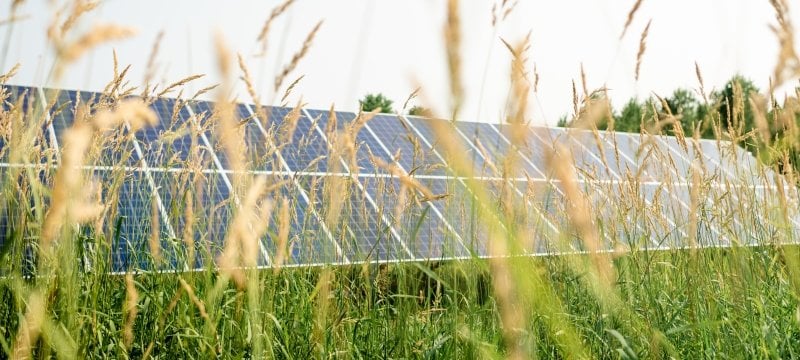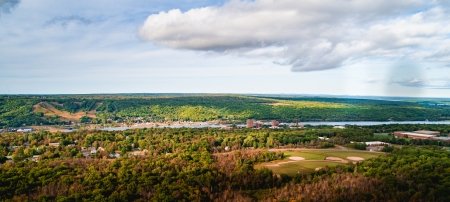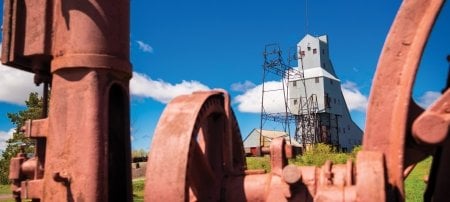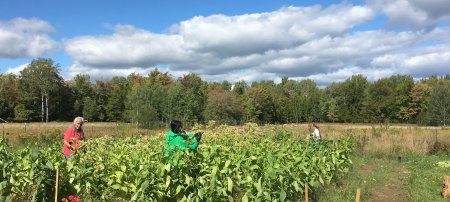Hypothesis: Understanding transitions to renewable energy systems in eight Michigan communities requires converging expertise and lived experiences.
Energy systems are often as unique as their communities; while hydro power might work for a community along a river with significant vertical drop, other communities might be better positioned for bioenergy. The risks and barriers to renewable energy transition are also contextually specific.
Hypothesis: An Unscripted Series
Research has to start somewhere. And it's usually a well-informed prediction.
To better understand how communities convert to renewable energy sources, researchers at Michigan Technological University are teaming up with Michigan State University and eight Michigan communities, both tribal and non-tribal. The project also goes beyond the community energy component to lay the foundation for a new field of study: socio-technological system transitions.
Funded by a $3.7 million National Science Foundation grant, “GCR: Collaborative Research: Socio-Technological System Transitions: Michigan Community & Anishinaabe Renewable Energy Systems” (MICARES), explores the social, cultural and technological dimensions of energy system transitions.
“This research is exclusively Michigan-focused,” said Kathleen Halvorsen, Michigan Tech’s associate vice president for research development as well as a university professor of natural resource policy and the project’s principal investigator. “We’re looking at renewable energy adoption in the state. The research will take place in eight different communities, including in two tribal nations.”

The communities include the Keweenaw Bay Indian Community in Baraga and L’Anse, Northport, Traverse City and the Sault Tribe of Chippewa Indians in Sault Ste. Marie.
“What are the social and cultural barriers that are hindering implementation of renewable energy technology? Barriers in L’Anse and Baraga aren’t the same as my hometown in Lower Michigan,” said Rebecca Ong, assistant professor of chemical engineering and one of the projects co-investigators. “What are their stories around energy, their needs, their risks? We need to come up with ways culturally and technologically to overcome those barriers.”
The More the Merrier
Ong said that because energy system adoption naturally spans multiple disciplines: resource management, chemical and materials engineering, electrical engineering, sociology, energy policy, philosophy of science and regional planning. Smoothing the transition requires all these disciplines and nonacademic perspectives. This transdisciplinary approach brings together community members, nongovernmental organizations, state agencies, utilities, energy consultants and other universities in the state, which underscores the need to define an entire academic discipline. Out of this need emerges sociotechnological system transitions (STST), an emerging field that bridges the social sciences, computational sciences and engineering.
Grants and Funding
National Science Foundation 1934346
“Any time you have a big transition, it won’t impact just the technological landscape but also social and cultural landscape. These factors play in how technology is adopted and changes how our culture operates,” Ong said.
Because the project is so large, the researchers have subdivided it into three separate components. That includes community engagement, assessing risks, benefits and opportunities and supporting decision-making tools. These tools include spatial analysis models, which the team intends to be transferrable to policy makers, communities and tribal nations across the state and outside of Michigan.
Halvorsen notes that many communities around the state are interested in renewable energy sources, but struggle with barriers to achieving the goals.
“If we have a community that wants to build a solar project, getting to the point where they can get a loan for that can be challenging,” Halvorsen said. “One of the communities we’re working with would like a loan for renewable energy development but they don’t necessarily have the resources to do the cost-share. And one of the steps to be competitive for the loan is increasing energy efficiency. We can help with things like doing an energy efficiency assessments and workshops on grant writing.”
Halvorsen said other common barriers are technological, such as having large enough batteries to store enough energy for later use, and social, such as how individual community members view renewable energy.
Expanding Impact
Additionally, the researchers emphasize the importance of different modes of thinking and experiencing the world; indigeneity is central to the project. A quarter of the research team identifies as Native American and the project’s conceptual model is inspired by the medicine wheel. A key focus is recruiting Native American students into the field, from K-12 all the way through graduate studies.
Halvorsen hopes that through work with communities to overcome challenges, by establishing a new field of study and by working with students, the project will pave the way for widespread renewable energy adoption throughout the state. And by the research team’s reckoning, time is of the essence to move away from fossil fuel-based energy systems.
“To me, climate change is THE problem,” Halvorsen said. “Everything I do contributes to trying to slow it down. I’m hopeful we’ll learn lessons and develop tools that make it easier for communities that want to adopt renewable energy to be able to.”
Transdisciplinary teams bring together the talents of many people. Those working on the MICARES project include:
- Kathleen Brosemer
- Laura Brown
- Yvette Dickinson
- Andrew Fiss
- Valoree Gagnon
- Joshua Pearce
- Chelsea Schelly
- Marika Seigel
- Richelle Winkler
Michigan Technological University is an R1 public research university founded in 1885 in Houghton, and is home to nearly 7,500 students from more than 60 countries around the world. Consistently ranked among the best universities in the country for return on investment, Michigan's flagship technological university offers more than 120 undergraduate and graduate degree programs in science and technology, engineering, computing, forestry, business, health professions, humanities, mathematics, social sciences, and the arts. The rural campus is situated just miles from Lake Superior in Michigan's Upper Peninsula, offering year-round opportunities for outdoor adventure.






Comments